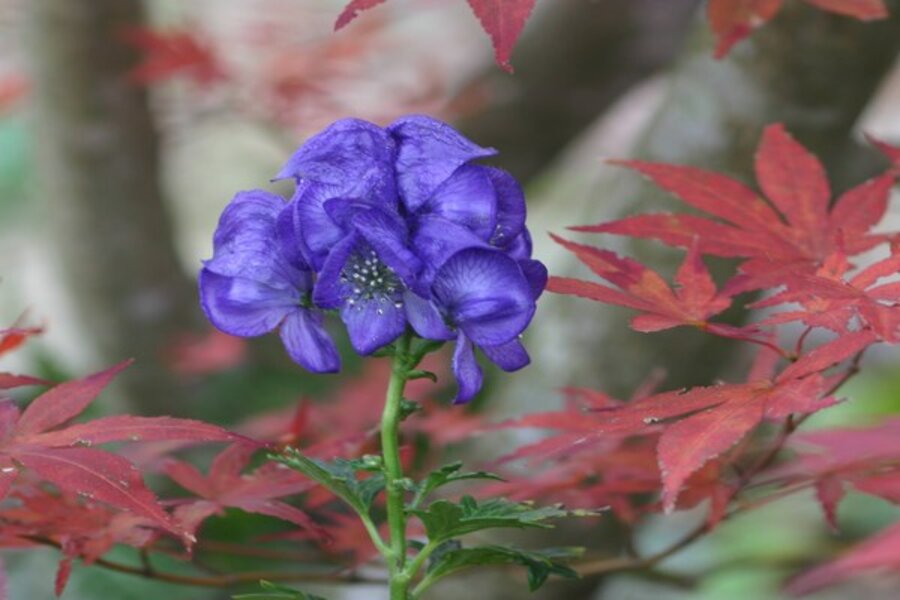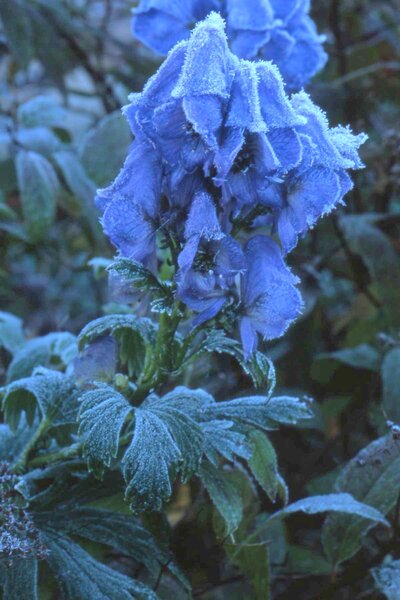Monkshood: Beautiful, blue, and long-blooming
Loading...
I have monkshood in my garden that stretch back more than 20 years to when I began gardening. Some I have lost the names of over the years, but, of course, that doesn't prevent them from blooming any less. I especially enjoy these perennials for the time of the year they bloom and for their numerous shades of blue flowers.
This plant has a long history. It has been used in medicinal gardens going back to medieval times. The Romans used Aconitum to poison wells, in order to eradicate wolves (which gave rise to one of the plant's common names, wolfsbane). The plant has also graced English cottage garden for centuries.
In Indiana, I normally I have Aconitum blooming in my garden beginning in late June, and different species continue the bloom to mid-December. This year all species and cultivars have waited until mid-September to begin blooming. They will remain in bloom well into December.
I have seen heavy freezes and snow on the blooms, and watched them go on to produce seed. They put on quite a show for this time of the year with the tall, stately, spires topped with blue "hoodies."
Oh, those blues
To name a few, monkshood flowers come in indigo blue, icy blue, lavender blue, and deepest purple-blue blooms in clusters at the top of stems. You may also choose from cultivars with pure white, pink, and bi-color blooms. There's even a yellow-blooming species.
Want a great-looking autumn garden? Just select a bloom period and your favorite shade of blue to go with all the gold, red, and brown of fall foliage.
There are monkshood that reach only a foot in height and others that can reach 12 feet, or more. In my garden the range from 3 feet to 8 feet. Some are very stately in stem, while others become like vines at the top of the stem and need staking or support from a neighbor.
I especially enjoy growing my monkshood at the base of small trees such a Japanese maples or witch hazels and allow them to provide colorful background. Witch hazels are noted for yellow, orange, and tan fall foliage, while Japanese maple has red leaves, so they're perfect color and texture companions.
Caution
A word of caution is in order, for all parts of monkshood are considered poisonous. When handling the plant, be sure to use gloves, especially if you have cuts or scrapes. Aconitum do need to be kept from pets or children.
All my monkshood are located at the open edge of my woodland gardens where they have decent soil, reasonable moisture, and lots of light without full sun for extended periods. Now to find room for just one more new cultivar.
-----
Gene Bush, a nationally known garden writer, photographer, lecturer, and nursery owner, gardens on a shaded hillside in southern Indiana. His website is www.munchkinnursery.com. He also writes the Garden Clippin's Newsletter. To read more by Gene here at Diggin' It, click here.






